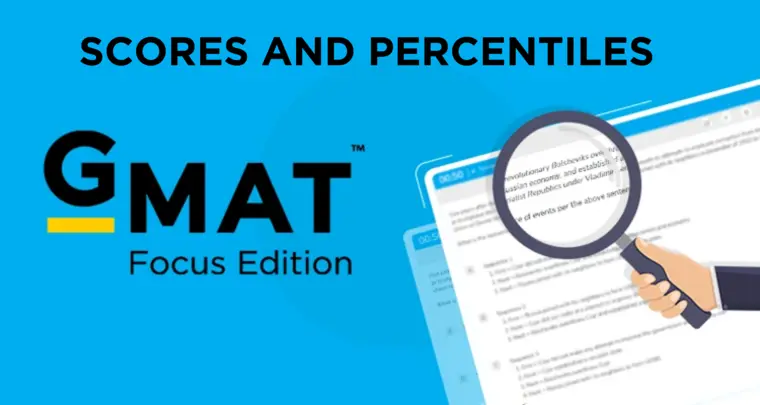Journalist: Every election year at this time the state government releases the financial disclosures that potential candidates must make in order to be eligible to run for office. Among those making the required financial disclosure this year is prominent local businessman, Arnold Bergeron. There has often been talk in the past of Mr. Bergeron’s running for governor, not least from Mr. Bergeron himself. This year it is likely he finally will, since those who have discounted the possibility of a Bergeron candidacy have always pointed to the necessity of making financial disclosure as the main obstacle to such a candidacy.
In the journalist’s argument the boldfaced portions play which of the following roles?
A. The first provides information without which the argument lacks force; the second states the main conclusion of the argument.
B. The first provides information without which the argument lacks force; the second states an intermediate conclusion that is used to support a further conclusion.
C. The first sites a practice that the journalist seeks to defend; the second sites a likely consequence of this practice.
D. The first states evidence bearing against the main conclusion of the argument; the second is that main conclusion.
E. Each provides evidence in support of an intermediate conclusion that supports a further conclusion stated in the argument.
Solution
Understanding the Passage
| Text from Passage | Analysis |
| (Boldface 1) “Every election year at this time the state government releases the financial disclosures that potential candidates must make in order to be eligible to run for office” | What it says: The government requires all people who want to run for office to publicly reveal their financial information during election season Visualization: Election candidates must disclose: bank accounts ($500K), stock holdings ($2M), debts ($300K), income sources ($1M salary) to qualify for ballot What it does: Establishes the background context and rules that apply to all potential candidates Source: Author’s factual statement |
| “Among those making the required financial disclosure this year is prominent local businessman, Arnold Bergeron.” | What it says: Arnold Bergeron, a well-known local businessman, has submitted his financial disclosure this year Visualization: Bergeron joins candidate pool by filing: personal assets ($5M), business holdings ($10M), annual income ($2M) with state election office What it does: Introduces the specific person this argument is about and establishes that he has taken the first step toward candidacy Source: Author’s factual statement |
| “There has often been talk in the past of Mr. Bergeron’s running for governor, not least from Mr. Bergeron himself.” | What it says: People have frequently discussed the possibility of Bergeron running for governor, and Bergeron himself has also talked about it Visualization: Past 5 years: media speculation (50+ articles), Bergeron’s own statements (“considering a run”), public interest polls (60% approval) What it does: Shows this isn’t a new idea – there’s been ongoing speculation and interest in his potential candidacy Source: Author reporting on public discussions and Bergeron’s statements |
| (Boldface 2) “This year it is likely he finally will” | What it says: The author believes that this year Bergeron will probably actually run for governor Visualization: Previous years: speculation only → This year: 80% likelihood he’ll officially announce candidacy and appear on ballot What it does: States the main conclusion – the author’s prediction about what will happen Source: Author’s conclusion/prediction |
| “since those who have discounted the possibility of a Bergeron candidacy have always pointed to the necessity of making financial disclosure as the main obstacle to such a candidacy.” | What it says: People who didn’t think Bergeron would run always said the main reason was that he wouldn’t want to reveal his financial information Visualization: Skeptics’ reasoning: Bergeron’s wealth ($15M+ assets) too private/complex to disclose → won’t run. Now: disclosure filed → obstacle removed What it does: Provides the reasoning that supports the conclusion – if the main obstacle has been removed, then he’s likely to run Source: Author reporting on skeptics’ views, used to support author’s conclusion |
Overall Structure
The author is presenting a prediction based on logical reasoning. The flow is: background context → specific situation → past speculation → current prediction → reasoning for that prediction.
Main Conclusion: Arnold Bergeron will likely run for governor this year.
Boldface Segments
- Boldface 1: Every election year at this time the state government releases the financial disclosures that potential candidates must make in order to be eligible to run for office
- Boldface 2: This year it is likely he finally will
Boldface Understanding
Boldface 1:
- Function: Provides essential background information about the financial disclosure requirement that applies to all candidates
- Direction: Supports the author’s conclusion by establishing the context needed to understand why Bergeron’s filing is significant
Boldface 2:
- Function: States the author’s main conclusion/prediction about Bergeron running for governor
- Direction: This IS the author’s ultimate position
Structural Classification
Boldface 1:
- Structural Role: Background context/premise that sets up the framework for understanding the argument
- Predicted Answer Patterns: “provides context,” “establishes background,” “explains a requirement”
Boldface 2:
- Structural Role: Main conclusion of the argument
- Predicted Answer Patterns: “main conclusion,” “author’s prediction,” “what the argument concludes”
Answer Choices Explained
A. The first provides information without which the argument lacks force; the second states the main conclusion of the argument.
- ‘The first provides information without which the argument lacks force’ – ✓ CORRECT – The first boldface establishes the financial disclosure requirement context that’s essential for understanding why Bergeron’s filing matters and why skeptics previously doubted his candidacy
- ‘The second states the main conclusion of the argument’ – ✓ CORRECT – The second boldface directly presents the journalist’s prediction that Bergeron will likely run this year, which is what the entire argument aims to establish
B. The first provides information without which the argument lacks force; the second states an intermediate conclusion that is used to support a further conclusion.
- ‘The first provides information without which the argument lacks force’ – ✓ CORRECT – Same reasoning as Choice A for the first part
- ‘The second states an intermediate conclusion that is used to support a further conclusion’ – ✗ WRONG – The second boldface IS the main conclusion, not an intermediate one that supports something else; there’s no further conclusion beyond this prediction
C. The first sites a practice that the journalist seeks to defend; the second sites a likely consequence of this practice.
- ‘The first cites a practice that the journalist seeks to defend’ – ✗ WRONG – The journalist isn’t defending or criticizing the financial disclosure practice; they’re simply stating it as factual background information
- ‘The second cites a likely consequence of this practice’ – ✗ WRONG – Bergeron running for governor isn’t a consequence of the disclosure practice itself, but rather a prediction based on the removal of what was perceived as an obstacle
D. The first states evidence bearing against the main conclusion of the argument; the second is that main conclusion.
- ‘The first states evidence bearing against the main conclusion of the argument’ – ✗ WRONG – The financial disclosure requirement doesn’t work against the conclusion; instead, it provides the necessary context for understanding why Bergeron’s filing supports the conclusion
- ‘The second is that main conclusion’ – ✓ CORRECT – The second boldface does state the main conclusion, but since the first part is wrong, this choice is incorrect
E. Each provides evidence in support of an intermediate conclusion that supports a further conclusion stated in the argument.
- ‘Each provides evidence in support of an intermediate conclusion that supports a further conclusion stated in the argument’ – ✗ WRONG – This mischaracterizes both boldface statements; the first provides background context (not evidence), and the second IS the main conclusion rather than supporting some further unstated














